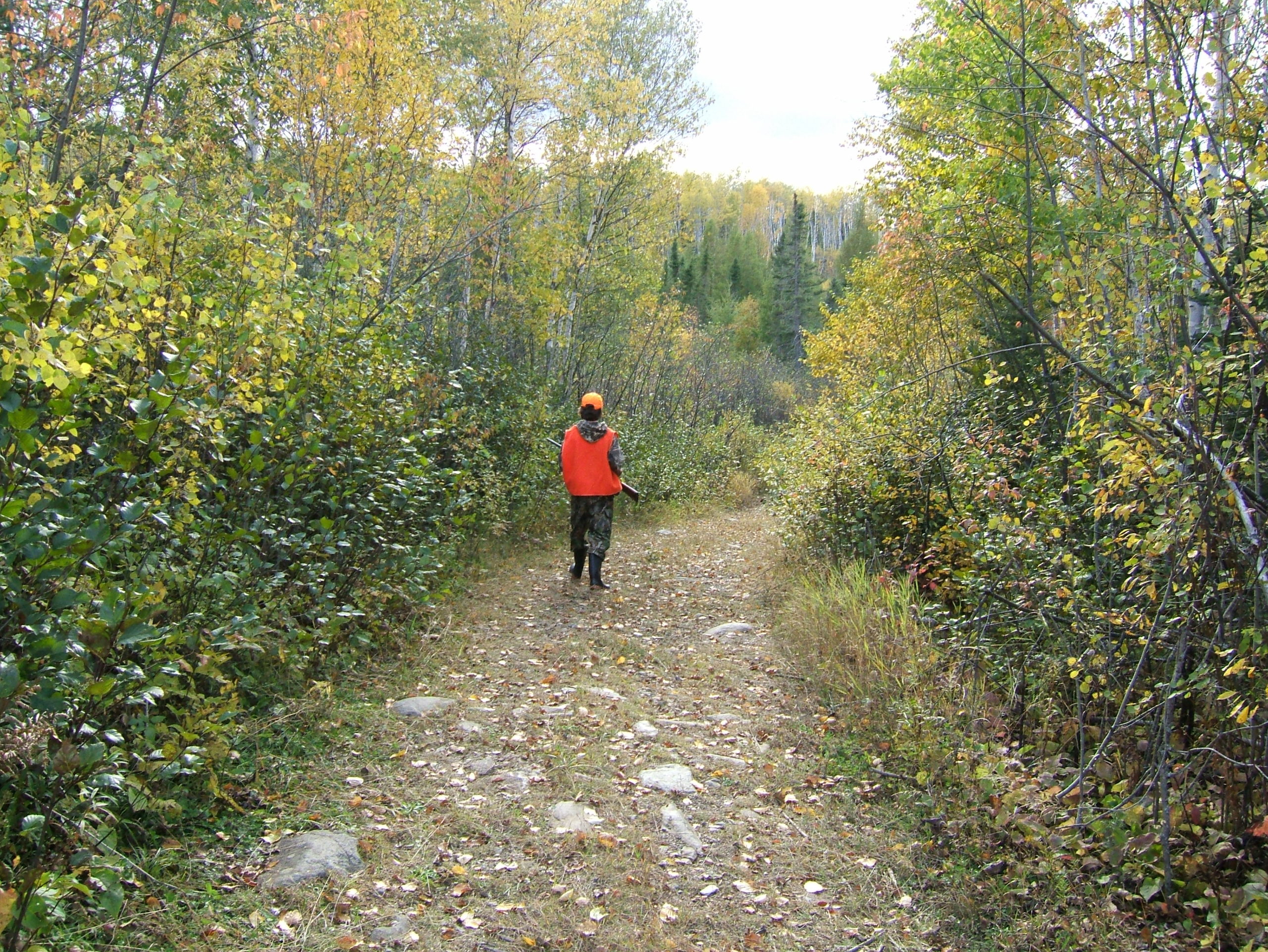The most popular game to hunt in northwestern Ontario is not moose or deer or even snowshoe hare. The number one creature pursued by hunters in the northwest is a bird many of us take for granted—the upland species known as ruffed grouse.
If you live in northern Ontario, you may call ruffed grouse “partridge.” I’m good with local names for fish and game, but the bird is properly called a ruffed grouse. And no, it’s not “ruffled” grouse either.
Some of my fondest memories of grouse hunts took place when my boys were young. I’d wait for them after school and would have a portable supper ready so they could eat as we drove to the bush. Then, they would walk with me, each in a small blaze hunting vest and blaze hat, with ear protection. When we saw a grouse (they would be asked to have their “grouse goggles” on), I’d step forward and shoot it. Then one of them would get the bird and carry it by the feet. Later we would clean them together and discuss the nature of hunting and why we needed to respect everything we killed. The next night we would eat those birds for supper. A couple of the fans would be boraxed, then dried in a book and later displayed in their bedrooms. Those are happy memories for me, and I hope for Devin and Austin.
Ruffed grouse are beautiful birds and come in varying shades of grey, black and rust red. These birds also sport a fan which is displayed by the males of this species during courtship. Ruffed grouse are widely distributed in the north but have distinct habitat preferences. They are a creature of the edge and like a mixed forest with birch and aspen nearby. Ruffed grouse tend to roost in evergreens in fall and winter, which is why the edges of conifer forests often hold the best numbers of birds.
So, let’s talk about some hunting specifics. Ruffed grouse are fond of running water, and hang around ravines, springs and stream edges. Just about any little rivulet or creek is a good place to look for them. Grouse are called upland birds because they tend to associate with breaks in the topography such as slopes, ridges and slow inclines. They also prefer warm ground over cool, which is why it’s rare to find numbers of grouse in areas that don’t get decent exposure to the sun. They share this trait with deer, and good bird habitat is also often home to whitetails. Some of the best hunting for grouse is on trails which meander through cutover country that has experienced a few years of growth. Walking an old trail is a very pleasant way to hunt, and as often as not, these paths are lined with brambles and berry laden bushes, just the kind of stuff Mr. Ruff likes to hang out in. Grouse also like to eat clover, mushrooms and all manner of bugs as well.

There are two other species of grouse in northern Ontario. Spruce grouse are generally found in lowland or black spruce forest and are quite commonly found hanging around stands of jack pine. Although spruce grouse are also a handsome bird, they’re less popular than ruffed grouse with hunter’s due to their sometimes-gamy flavor. Spruce grouse—or hens—are also not the brightest bulbs on the Christmas tree. They will often sit in trees and not fly when approached.
The other species we see from time to time is the sharp-tailed grouse. Sharp-tails are the least common of the three grouse found in the northwest and only occur in any numbers north of the CN main line, although they have been spotted more recently in the timber cuts near Quetico park. I’ve also seen them while deer hunting around Emo, Ontario. Sharp-tailed grouse are a larger bird than the spruce and ruffed grouse and are both a strong flier and a challenge to hunt. They also make a unique sound when they fly.
Hunting seems to have little effect on ruffed grouse populations, although as far back as 1721, restricted hunting seasons were imposed to protect grouse because of sudden scarcity.
Closed hunting seasons or not, grouse numbers invariably climbed out of the hole and the birds have become numerous again. This fall looks decent for birds, so far. I’ve seen dozens during my drives this summer in the bush northeast of Thunder Bay.
How popular is grouse hunting in Ontario? Roughly one million grouse are taken each fall by hunters in this province. Bird hunters also make up the largest overall proportion of hunters. There really are few things more enjoyable than a fall walk in the bush to pot a couple of grouse.
Getting a few grouse and then frying them up chicken finger style never gets old.

